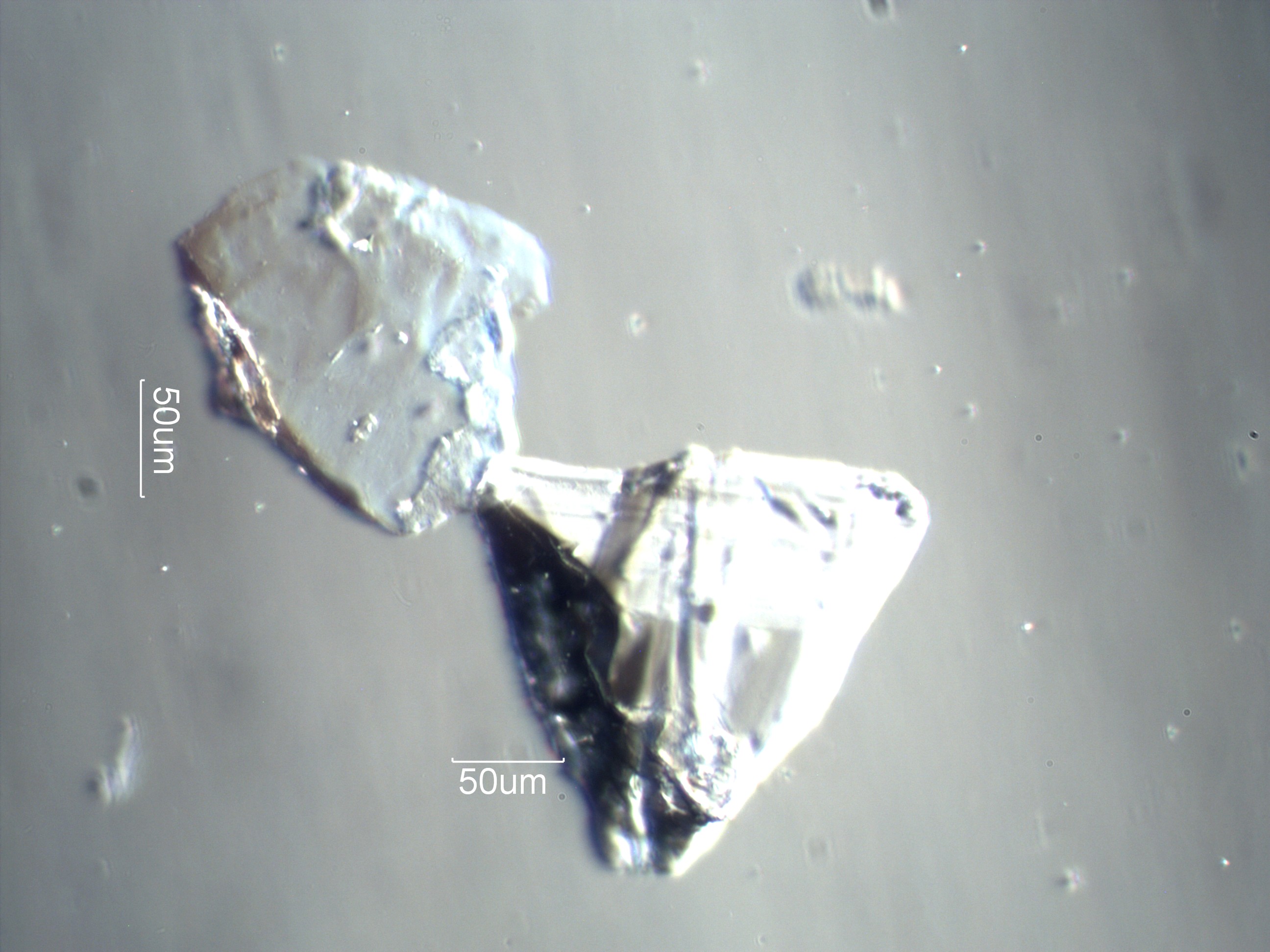Olivine, Cargille Standard
This olivine is from The Cargille Standard Mineral set.
This sample is mounted in Arochlor 5442 with a refractive
index of 1.664. The dispersion colors indicate a refractive index of about 1.656 in
this orientation. The lower gray particle is quartz in
nearly an optic axis orientation and not olivine. The bright side being on the right
with this configuration of the illumination indicates that
it has a lower refractive index than the mounting medium and the high contrast (high
relief) indicates that it is much lower. Some mixing of
other minerals is not uncommon and should be watched for.
Transmitted Oblique Illumination with a Single Linear Polarizing Filter
Definition/Function:
Olivine has the general chemical composition of (Mg,Fe)2[SiO4]. It
is a very common mineral in igneous
rocks and sediments from those rocks. The magnesium end member is the mineral Forsterite
and the iron end member is Fayalite. As the amount
of iron increases the names chrysolite, hyalosiderite, hortonolite, and ferrohortonolite
are used.
Significance in the Environment:
Characteristic Features:
Olivines belong to the orthorhombic crystal system and may be optically positive or
negative, the iron rich members being optically negative.
The refractive indices range from 1.635-1.827 for alpha, 1.651-1.869 for beta, and
1.670-1.879 for gamma. Its birefringence ranges from 0.035
to 0.052. The density of hornblendes range from about 3.22 to 4.39 grams/cc. The 2V
ranges from 82 to 134 degrees. Small grains tend to be
colorless to green or yellow. Hornblende is pleochroic with alpha and gamma:pale yellow
and beta:orange- yellow to riddish brown, depending on
iron content.
Associated Particles:
References:
Deer, W. A., R. A. Howie, and J. Zussman, AN INTRODCUTION TO THE ROCK-FORMING MINERALS,
ISBN 0-582-30094-0, pp. 3-13, 1992.


